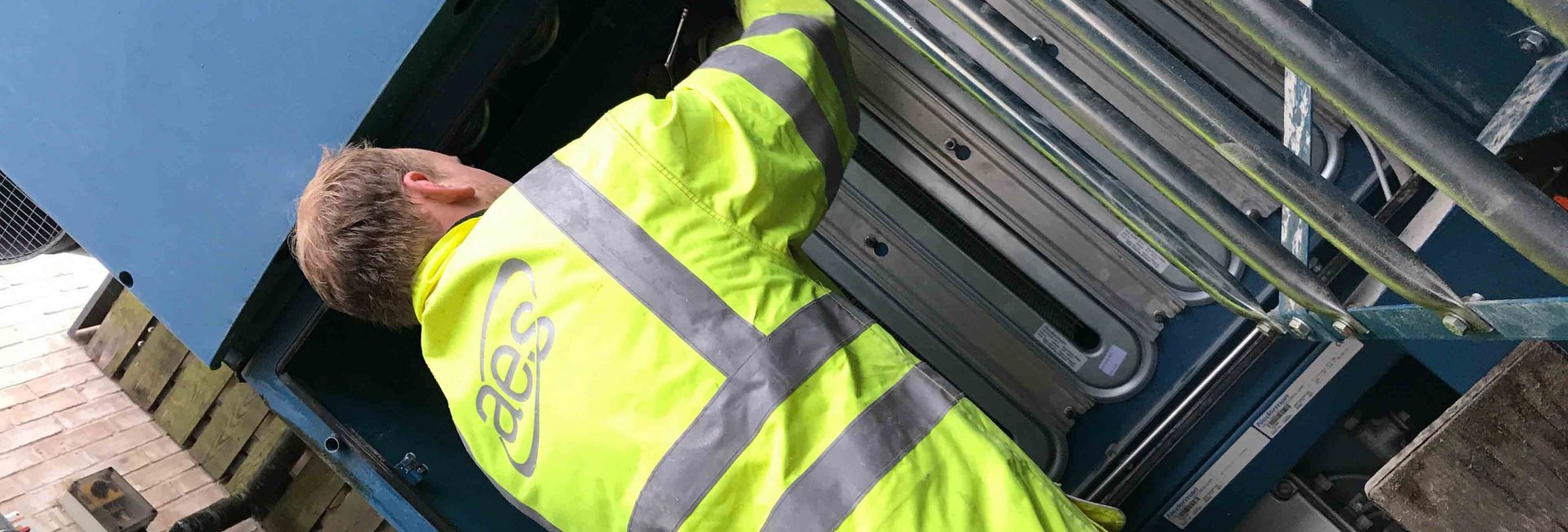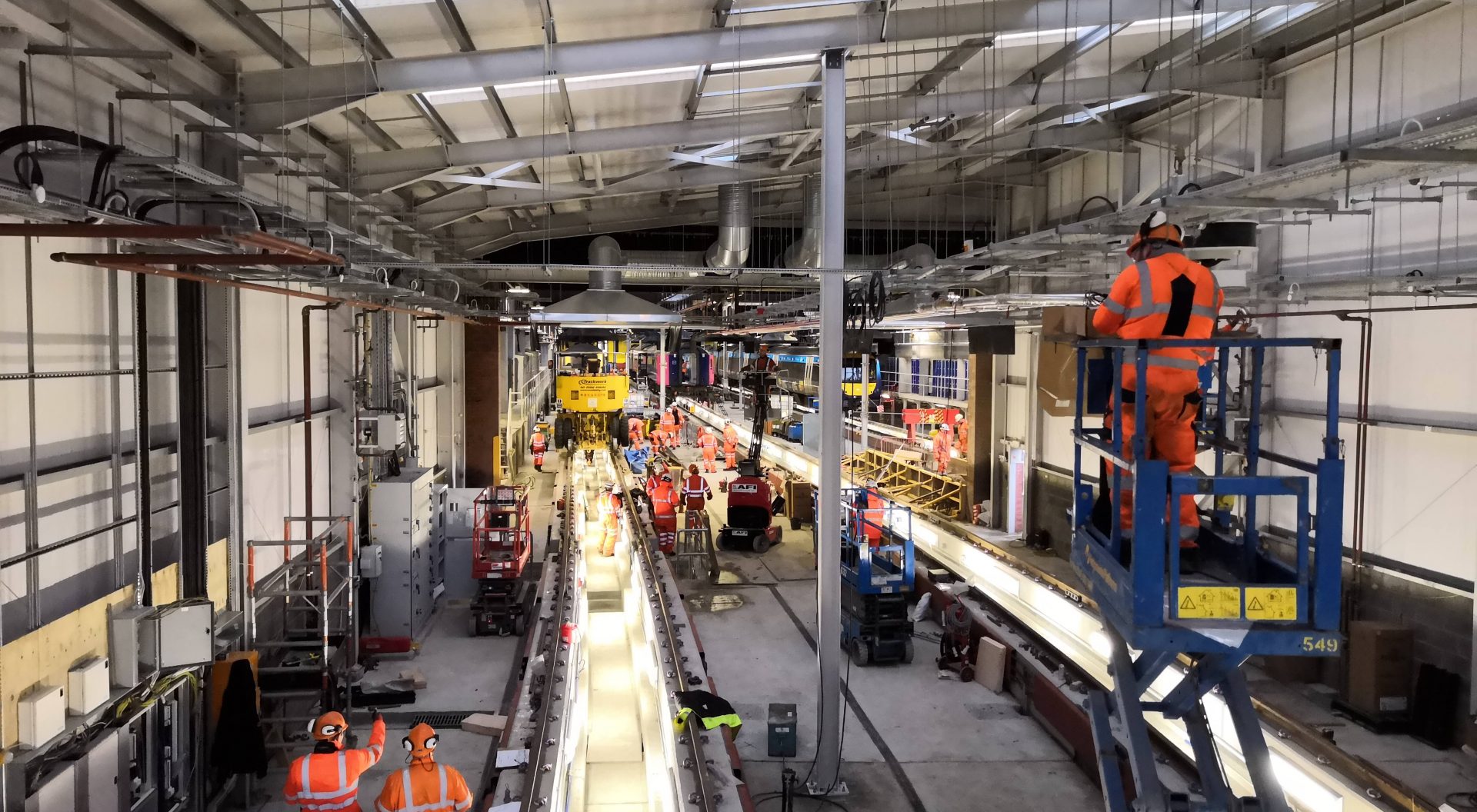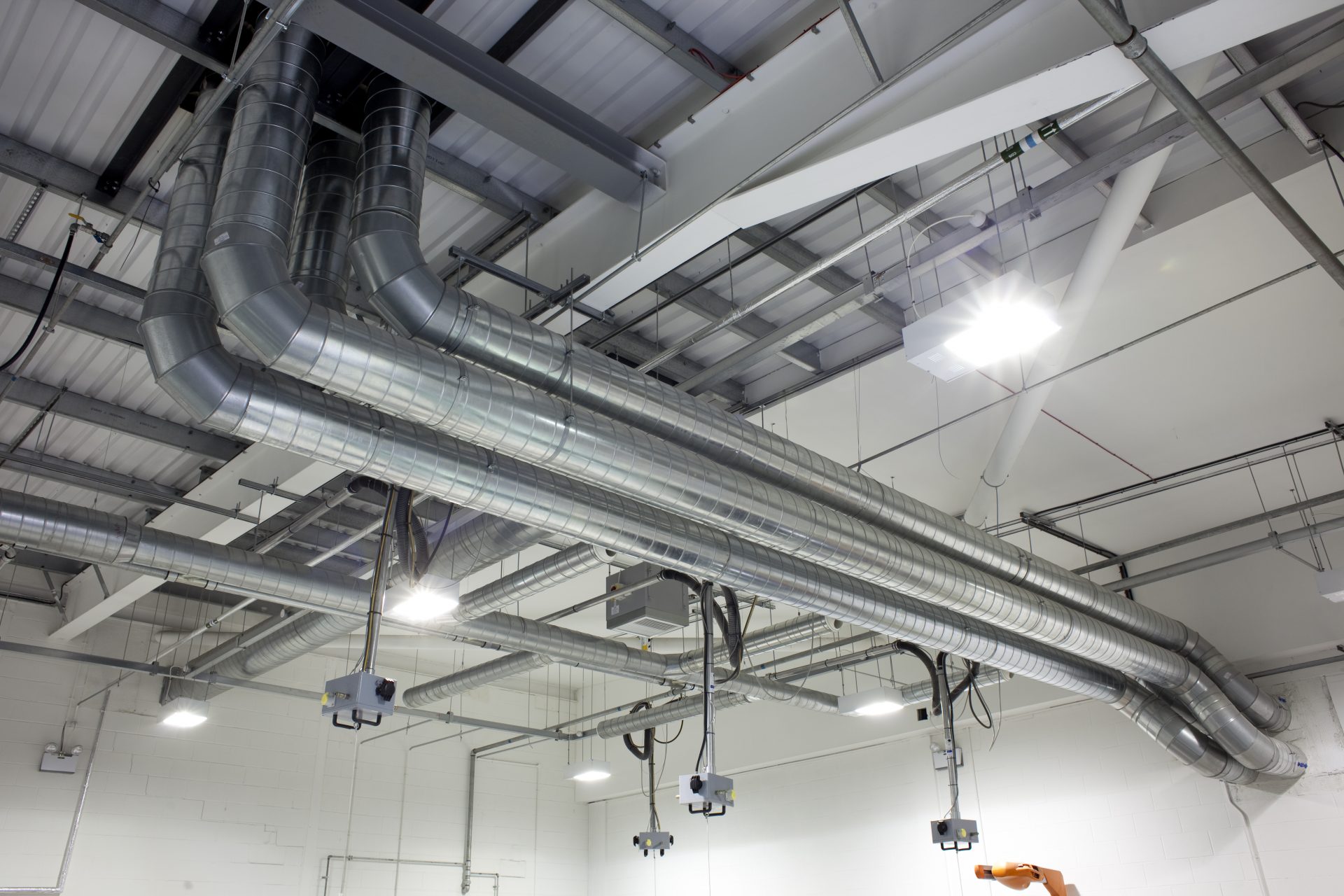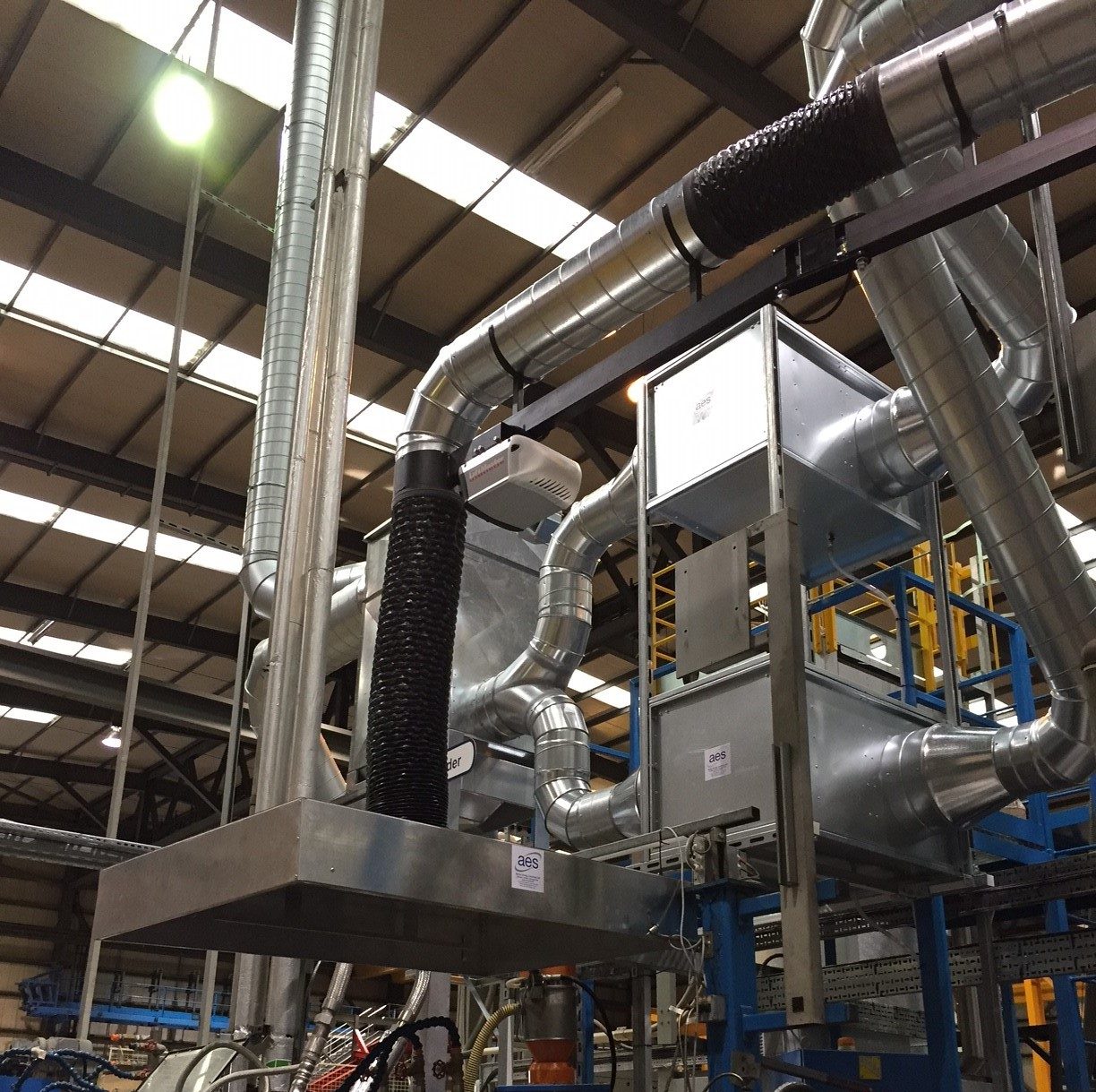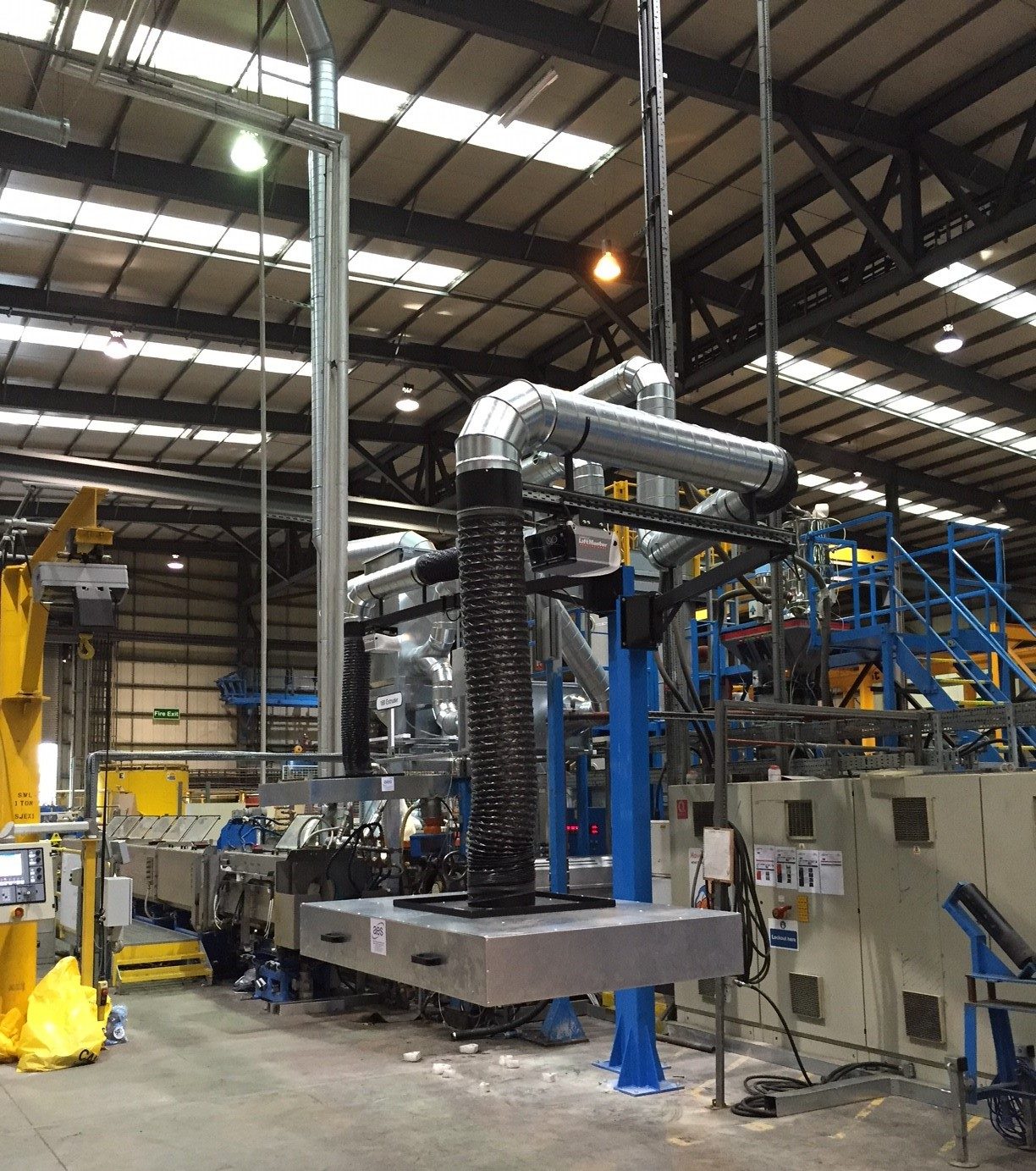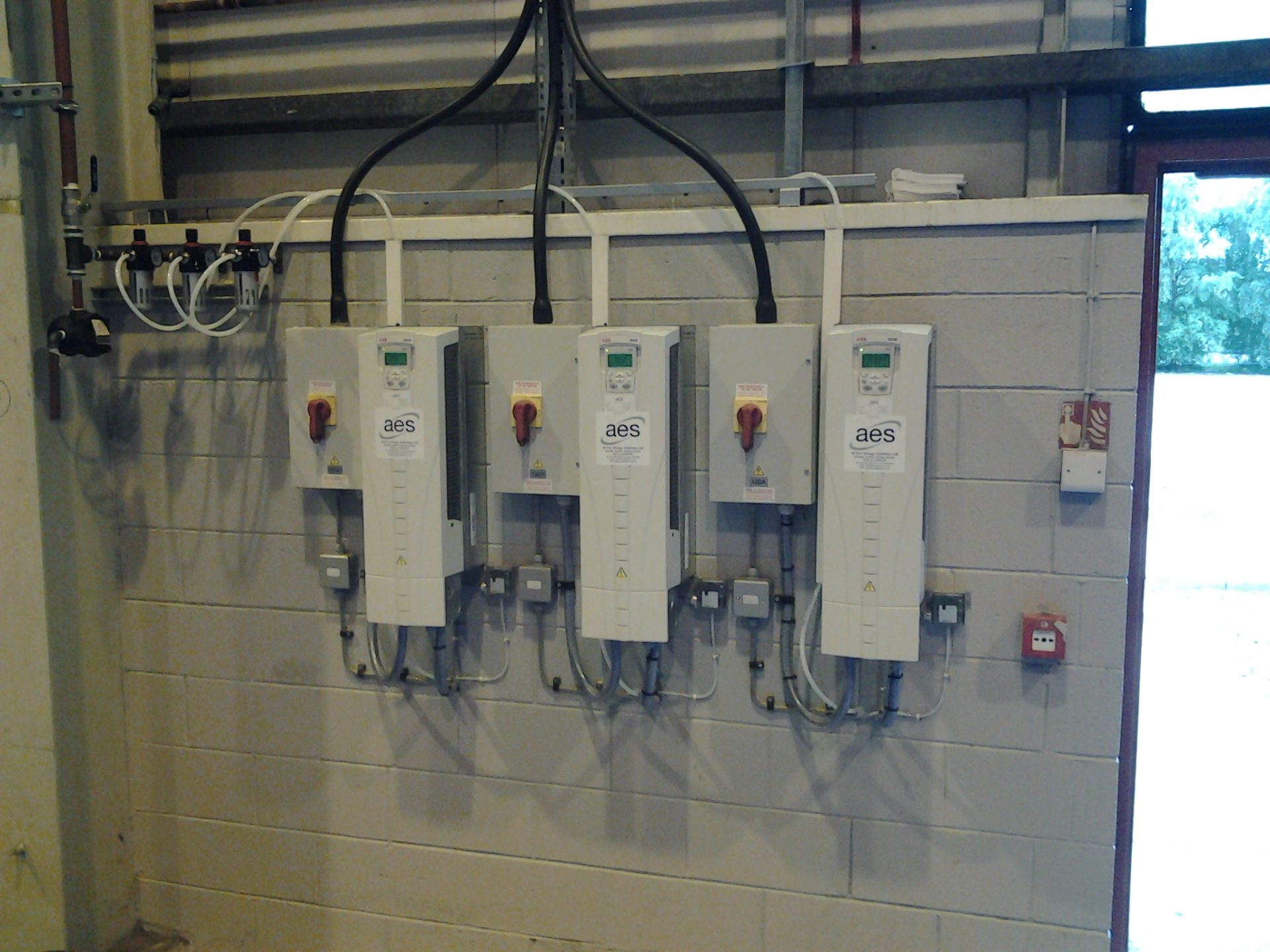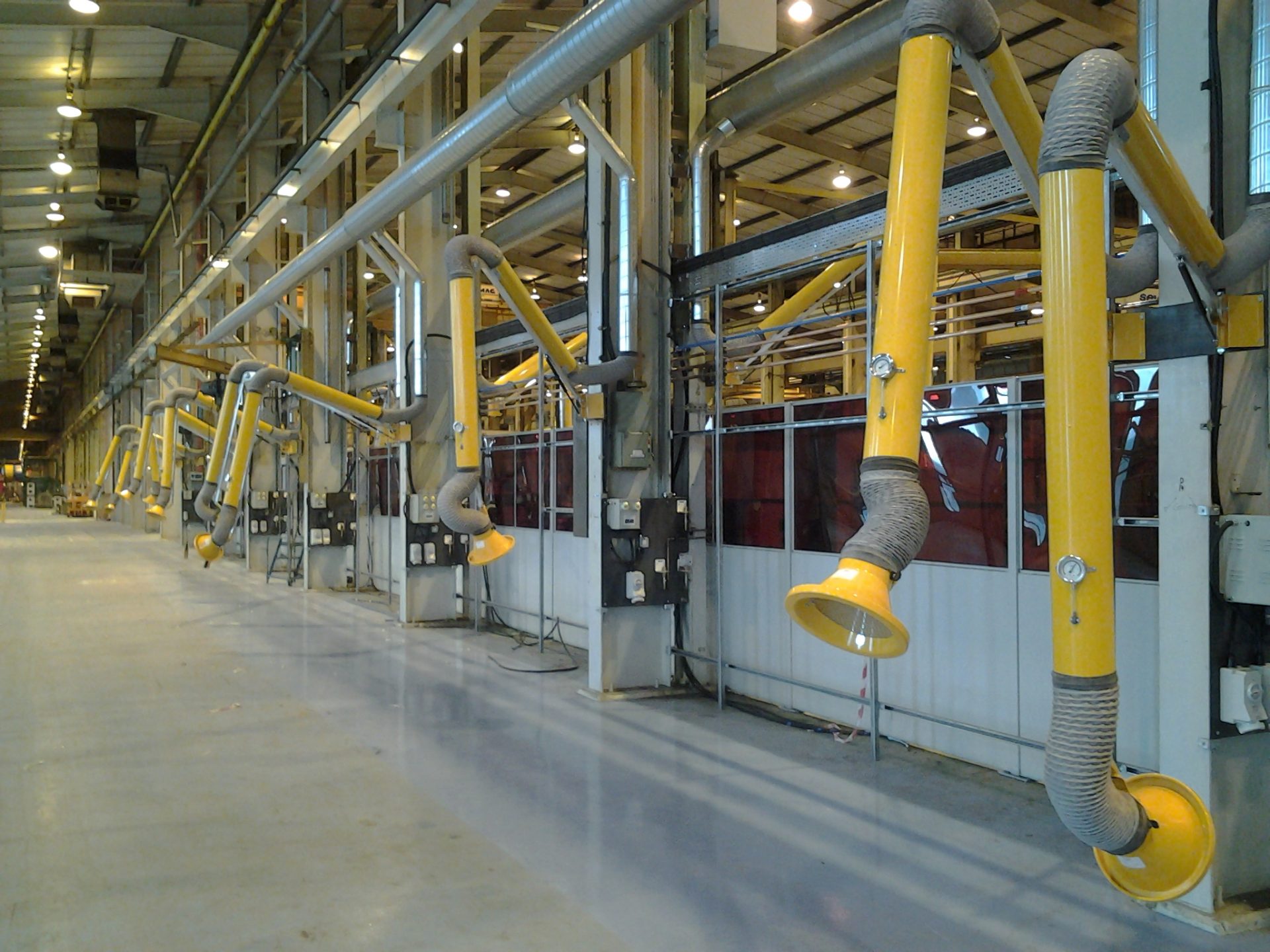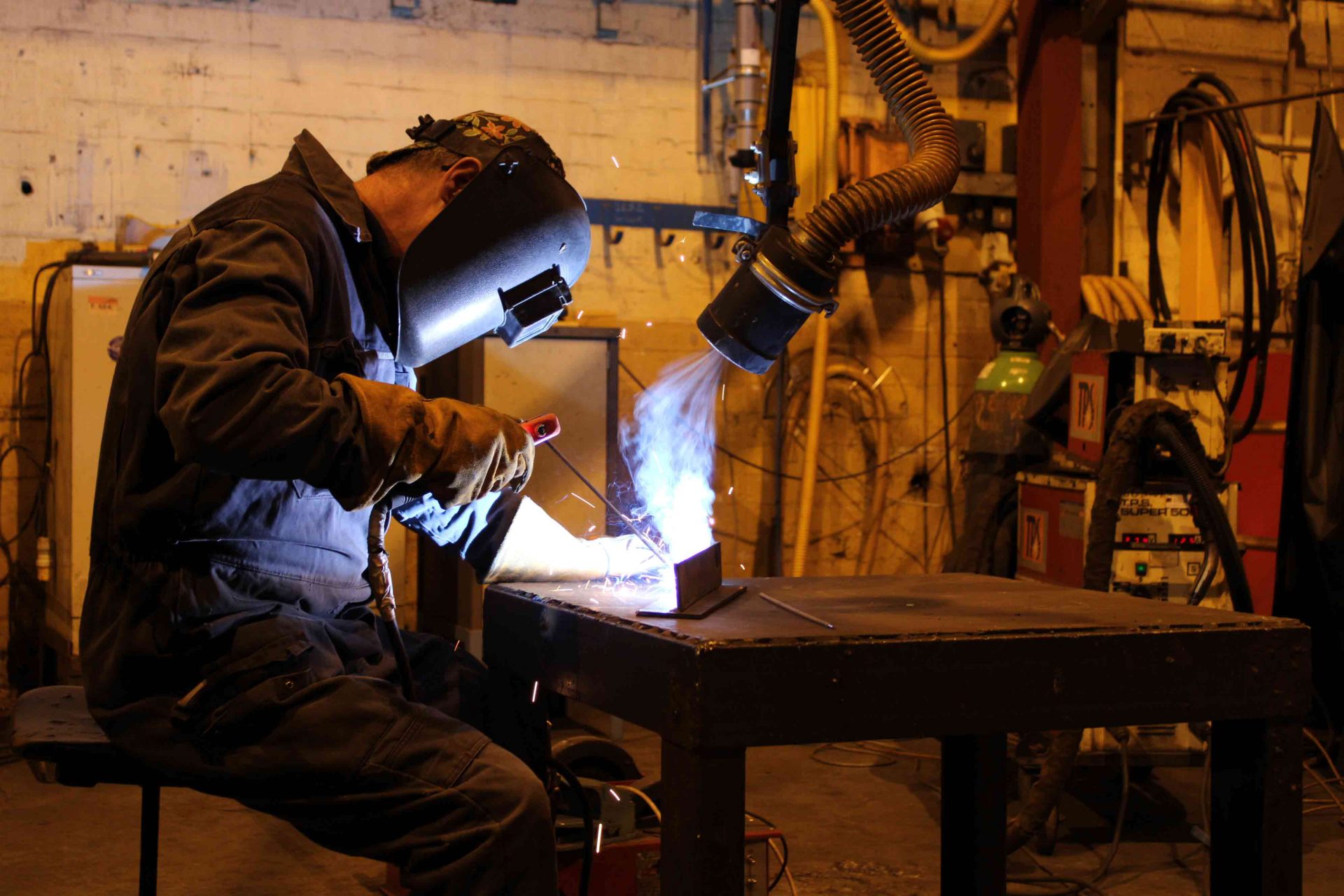Industry experts in installation and commissioning.
AES employs a dedicated team of 15 installation engineers and can carry out all mechanical and electrical works required for a full project installation. Over the last 21 years we have supplied and fitted over 2000 LEV systems with geographical coverage ranging from the Channel Islands to the Shetland Islands.
Installation
Our team of 15 installation staff here at AES are fully qualified mechanical and electrical engineers with over 20 years experience in the LEV industry. The team have the capability to carry out all works required for a full project installation working closely with our design and project management team to provide industry leading services to our customers.
Some of recent installations can be viewed in our case studies section.
Health and Safety is at the core of our values and the majority of our engineers hold the Construction Industry’s Site Supervisor’s Safety Certification (SSSC) with several having the Site Manager’s Safety Certificate (SMSC). Our depth of experience and supporting infrastructure means that we have the ability to carry out several installations simultaneously at different locations throughout the UK. AES holds a number of industry leading accreditations including SafeContractor, CHAS, Constructionline (Gold Status), SELECT and Gas Safe.
Commissioning
On completion of installation works all systems undergo a commissioning process in accordance with the guidance published in HSG 258 – Controlling Airborne Contaminants. This process consists of three stages as follows:
Confirmation of Mechanical and Electrical Performance.
The systems are first checked to ensure that all mechanical and electrical components are operating as designed and intended. This may include initial balancing of system, checks on automatic valves, filter cleaning systems, inverter set up and calibration of airflow indicators. Where necessary, electrical works completion certificated will be provided.
All systems will then be commissioned by a qualified engineer to ensure that they are controlling the hazardous substance in accordance with the COSHH regulations and HSG 258 guidance.
Measure of Technical Performance.
Once it has been established that the system is installed and performing as designed and intended, the technical performance of the system is measured by a LEV commissioning engineer. This exercise will measure duct velocities, static pressures and hood velocities and flowrates. this information will form the basis of the commissioning report and be used as a benchmark for future Thorough Examination and Tests.
Proof of Control Effectiveness
The final stage is to prove that the system is controlling the hazardous substance it has been designed for. This may include a variety of qualitative or quantitative test as follows:
- Dust Lamp (Tyndall Beam Illumination): This method allows visualisation of the dust or fume emitted by the process and allows the commissioning engineer to access how well the contaminant is being extracted
- Smoke Tests: Tracer smoke can be used to visualise airflow and to demonstrate the effective range of capture hoods. Where this is carried out a label showing the capture distance will be fixed to the hood.
- Real Time Dust/Aerosol Monitors: A hand-held laser photometer which measures real-time concentration of dust can give a direct readout of actual dust levels. This method can give qualitative information into the actual deductions in potential exposure achieved by the system.
- Personal/Static Sampling: Personal or static sampling can be carried out for a wide range of dust types and chemical fume. Personal sampling is the HSE recognised methodology for determining whether exposure is being controlled to the Workplace Exposure Limit (WEL). AES staff hold BOHS accredited W501 qualification for measurement of hazardous substances.
Production of commissioning report, user manual and logbook
Once all site works have been completed the commissioning engineer will work with our office administration team to produce all documentation required by the customer to fulfill their responsibilities under the COSHH Regulations.
AES also provide operator familiarization training sessions for all staff who will be using the LEV equipment, which is included within our package. This session will cover the models of best practice to use the equipment provided and ensure the staff are aware of appropriate maximum capture distances for any captor hoods supplied.
We will also supply all relevant signage on our captor hoods and equipment stating these values and any other useful information including the relevant test dates and asset numbers.
For each system we will compile a manual or electronic folder containing the following information:
- Commissioning report detailing technical performance and proof of effective control
- User manual containing system design, intended operating performance, maintenance checks and instructions for future Thorough Examination and Testing.
- System drawings
- Manufacturer’s manuals for individual components e.g. fans , filters
- User weekly check sheet
- System log sheet to record maintenance work, filter replacements etc.
View some examples our installations below
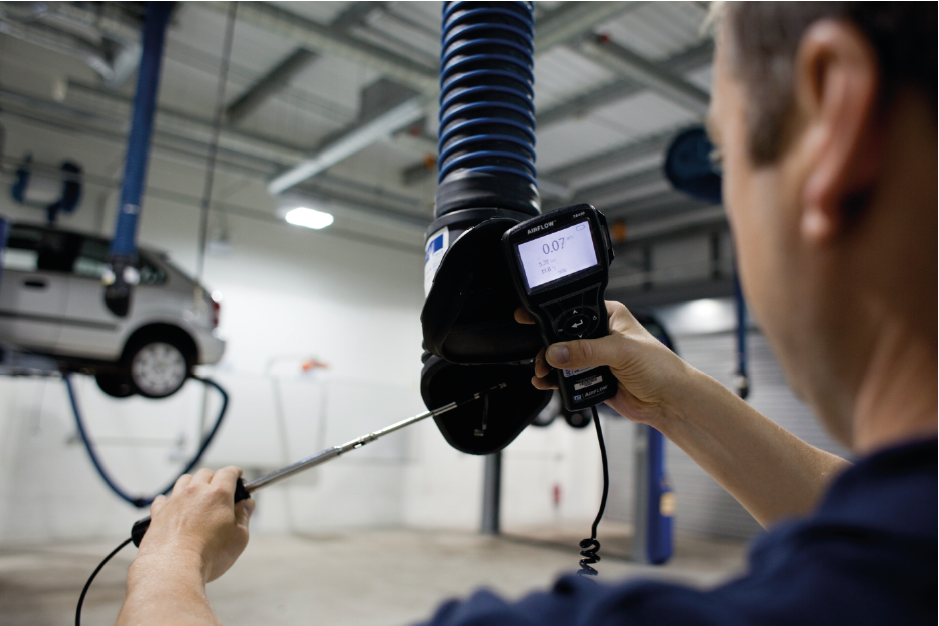
Get in touch with us
Contact us using the links below to speak to one of our consultants. You can ask us a question, look up useful resources or call us on 0800 032 0895 for an instant response.
